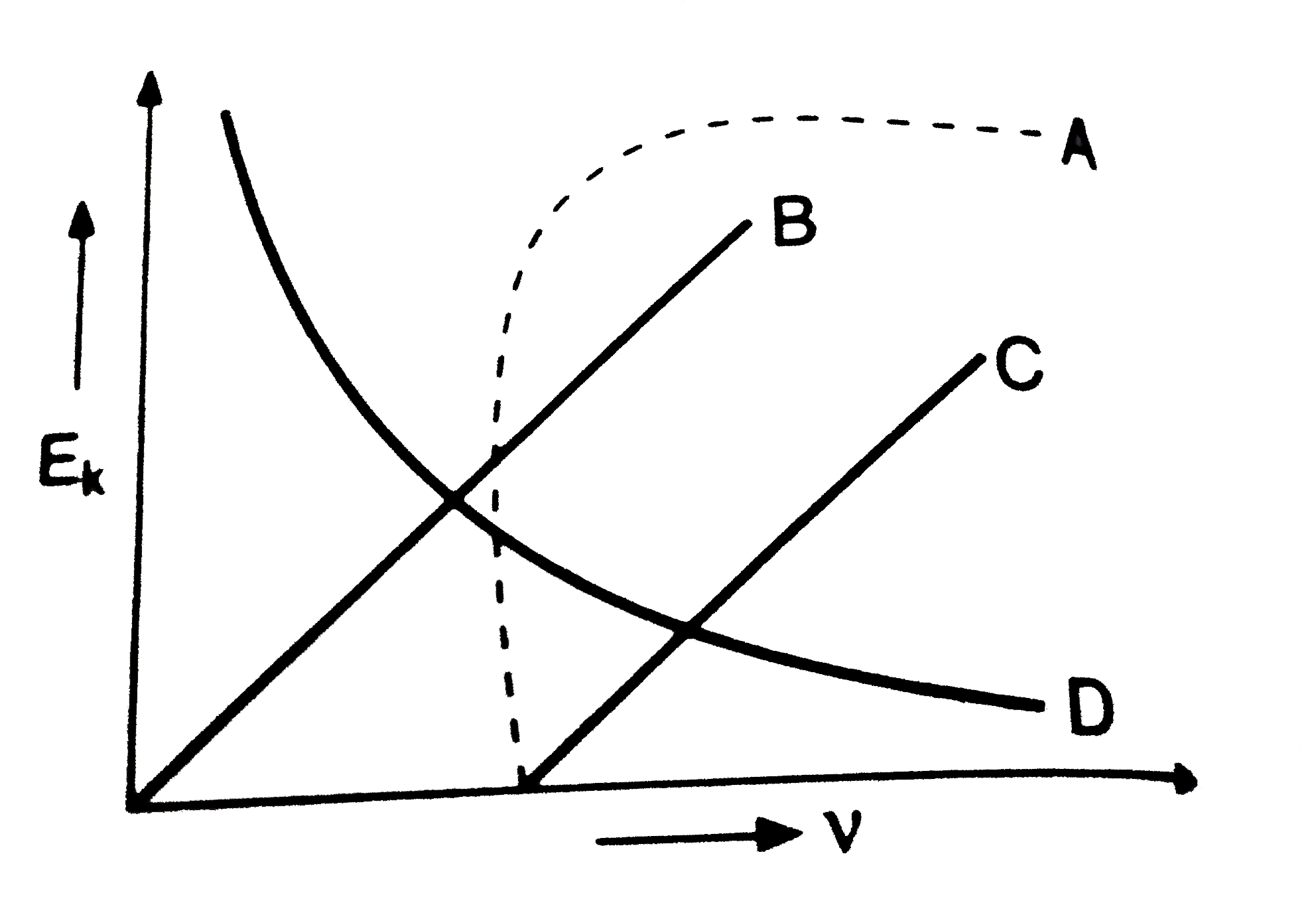Statement - 1 : When ultraviolet light is incident on a photoncell , its stopping potential is V0 and the maximum kinetic energy of the photoelectrons is Kmax when the altraviolet light is replaces by X- rays both V0andKmaxincrease
Statement - 2 : photoelectrons are emitted with speeds ranging from zero to a maximum value because of the range of frequencies present in the incident light
Statement - 1 is true , statement - 2 is true , statement - 2 is the correct explanation of statement - 1
Statement - 1 is true , statement - 2 is true , statement - 2 is not the correct explanation of statement - 1
Statement - 1 is false , statement - 2 is true
Statement - 1 is true , styatement - 2 is false
The correct Answer is:D
we know that
_(e)V0=kmax=hv−b
where ϕ is the work fuction
hence as v increases (note that frequency of x- rays is greater then that of UV rays ) , both V0andkmax increases so statement - 1 is correct
Topper's Solved these Questions
- MODERN PHYSICSBOOK - SUNIL BATRA (41 YEARS IITJEE PHYSICS)CHAPTER - MODERN PHYSICSEXERCISE - MCQ (One Correct Answer
1 Videos
- ELECTROSTATICSBOOK - SUNIL BATRA (41 YEARS IITJEE PHYSICS)CHAPTER - ELECTROSTATICSEXERCISE - Comprehension Based Questions
2 Videos
- MOVING CHARGES AND MAGNETISMBOOK - SUNIL BATRA (41 YEARS IITJEE PHYSICS)CHAPTER - MOVING CHARGES AND MAGNETISMEXERCISE - MCQs(d )
1 Videos
Similar Questions
The photoelectric threshold 4v is incident on the metal is v. When light of frequency 4v is incident on the metal, the maximum kinetic energy of the emitted photoelectron is
View SolutionMaximum kinetic energy (Ek) of a photoelectron varies with the frequency (v) of the incident radiation as
View Solution
Knowledge Check
When ultraviolet light is incident on a photocell, its stopping potential is V0 and the maximum kinetic energy of the photoelectrons is Kmax. When X-rays are incident on the same cell, then:
AV0 and Kmax both increaseBV0 and Kmax both decreaseCV0 increases but Kmax remains the sameDKmax increases but V0 remains the sameLight of frequency 4v0 is incident on the metal of the threshold frequency v0. The maximum kinetic energy of the emitted photoelectrons is
A3hv0B2hv0C32hv0D12hv0The maximu kinetic energy (Ek) of the photoelectron varies with frequency (v) of the incident light as shown by the curve:
 AABBCCDD
AABBCCDD
Light of frequency 8×1015Hz is incident on a substance of photoelectric work function 6.125eV. The maximum kinetic energy of the emitted photoelectrons is
View SolutionLight of wavelength 4000 Å is incident on a metal surface. The maximum kinetic energy of emitted photoelectron is 2 eV. What is the work function of the metal surface ?
View SolutionThe photoelectric threshold frequency of a metal is v. When light of frequency 4v is incident on the metal . The maximum kinetic energy of the emitted photoelectrons is
View SolutionThe photoelectric threshold frequency of a metal is v. When light of frequency 4v is incident on the metal . The maximum kinetic energy of the emitted photoelectrons is
View SolutionLight of wavelength 3000Å is incident on a metal surface whose work function is 1 eV. The maximum velocity of emitted photoelectron will be
View Solution
